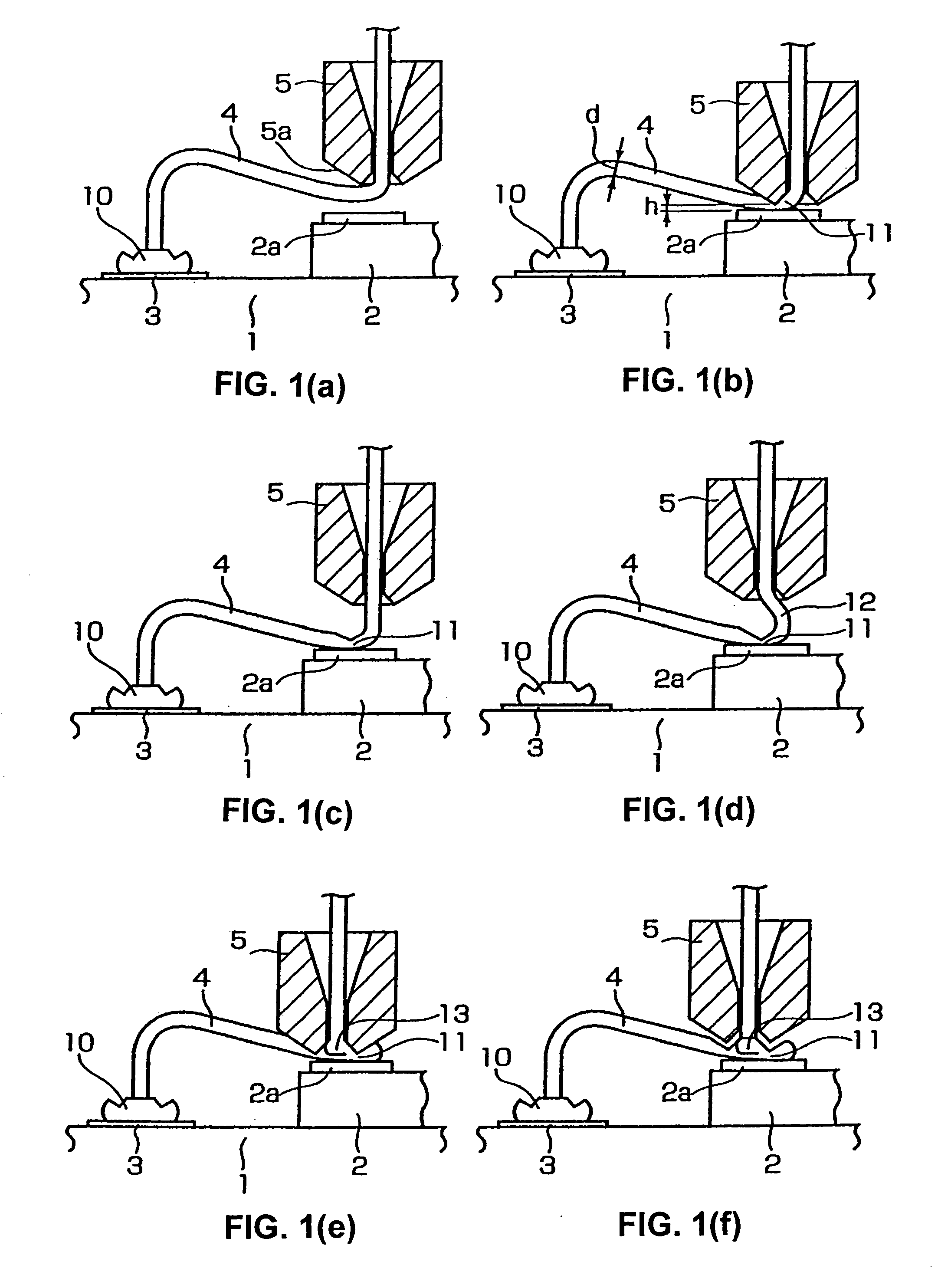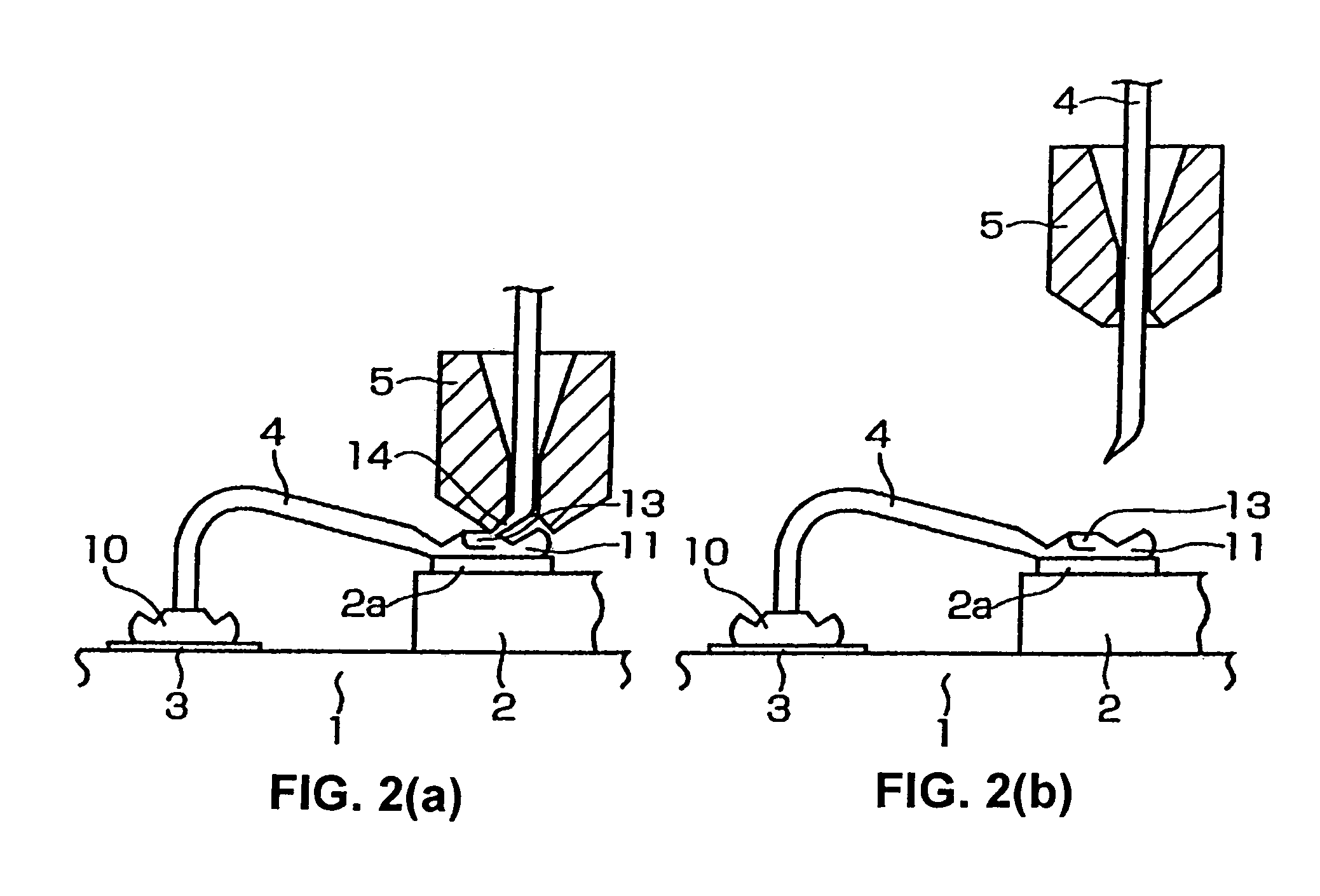Semiconductor device
a technology of semiconductors and devices, applied in the field of semiconductor devices, can solve the problems of rising wires, cracks, etc., and the formation of dies, and achieve the effect of not damaging the pads
- Summary
- Abstract
- Description
- Claims
- Application Information
AI Technical Summary
Benefits of technology
Problems solved by technology
Method used
Image
Examples
Embodiment Construction
[0021] One embodiment of the semiconductor device of the present invention will be described with reference to FIG. 2(b) that shows a completed semiconductor.
[0022] A die 2 on which a pad 2a is formed is mounted on a circuit board 1, which is a ceramic board, a printed board, a lead frame, etc. Wiring 3 is formed on the circuit board 1.
[0023] In this semiconductor device, a ball formed on the tip end of a wire 4 is connected to the wiring 3 that is the first bonding point, thus forming a crimped ball 10; and the wire 4 is connected to a pad 2a which is on the die 2, the pad 2a being the second bonding point, so that the wiring 3 and pad 2a are connected by the wire 4. The connected shape of the wire on the pad 2a that constitutes the second bonding point is comprised of a first bonding part 11 formed by the connection of the wire 4 to the pad 2a and a second bonding part 13 formed by overlapping and connecting the wire 4 to this first bonding part 11.
[0024] Thus, the connection o...
PUM
| Property | Measurement | Unit |
|---|---|---|
| semiconductor | aaaaa | aaaaa |
| diameter | aaaaa | aaaaa |
| height | aaaaa | aaaaa |
Abstract
Description
Claims
Application Information
 Login to View More
Login to View More - R&D
- Intellectual Property
- Life Sciences
- Materials
- Tech Scout
- Unparalleled Data Quality
- Higher Quality Content
- 60% Fewer Hallucinations
Browse by: Latest US Patents, China's latest patents, Technical Efficacy Thesaurus, Application Domain, Technology Topic, Popular Technical Reports.
© 2025 PatSnap. All rights reserved.Legal|Privacy policy|Modern Slavery Act Transparency Statement|Sitemap|About US| Contact US: help@patsnap.com


